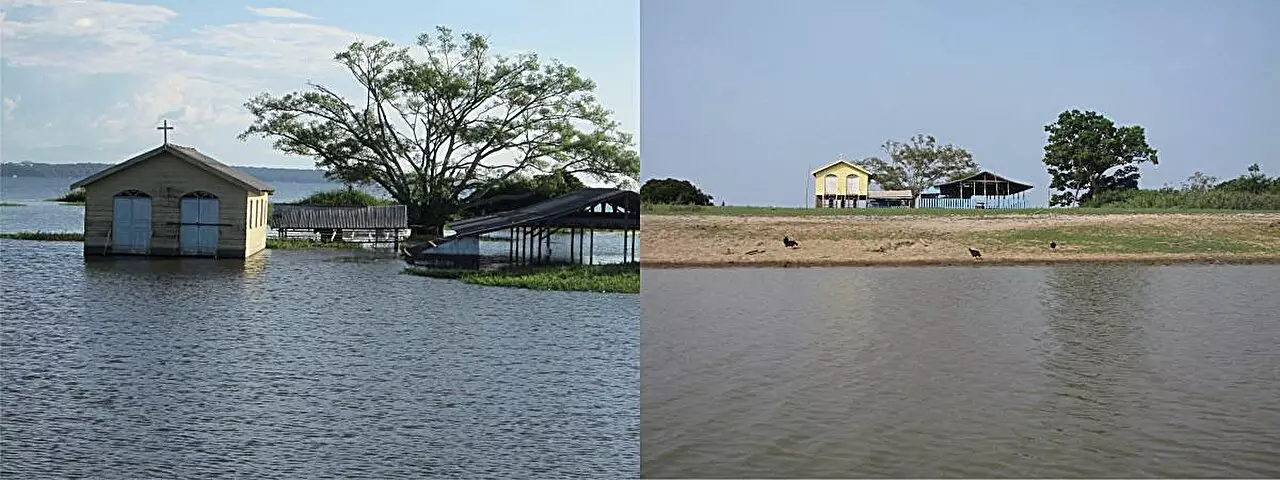The Amazon Rainforest, often referred to as the lungs of the Earth, plays a critical role in regulating atmospheric gases, acting as both a carbon sink and a source of methane emissions. Recent research conducted by scientists at the University of São Paulo unveils alarming projections regarding the ecosystem’s response to climate change. As temperature and precipitation patterns shift, the delicate balance of methane-producing and methane-consuming microorganisms in flooded areas and upland forests stands to be severely disrupted. This disruption not only threatens local biodiversity but poses significant global implications for greenhouse gas concentrations.
Spanning over 800,000 square kilometers, Amazon’s floodplains occasionally remain submerged for nearly half the year due to consistent rainfall and rising river levels. This extensive flooding creates unique habitats where microbial communities play a pivotal role in the breakdown of organic matter, leading to increased methane emissions. Stand out data indicates that these floodplains are responsible for approximately 29% of global methane emissions sourced from wetlands.
Conversely, upland forests contribute positively to the environmental equilibrium by functioning as methane sinks, sequestering large amounts of the greenhouse gas from the atmosphere. This dual role of the Amazon—as both a contributor to and mitigator of greenhouse gas emissions—highlights the complexity and interconnectedness of ecological dynamics within this biome.
The investigation led by researchers, including postdoctoral scholar Júlia Brandão Gontijo, involved an intensive 30-day analysis of soil collected from both floodplain and upland forest ecosystems. Conducted across the municipalities of Santarém and Belterra in the state of Pará, Brazil, this study sought to understand how shifting climatic conditions affect methane-producing microorganisms. The soil samples were subjected to extreme temperatures of 27°C to 30°C under varying humidity levels to simulate climate change scenarios.
Using advanced techniques such as genetic sequencing and real-time quantitative PCR, the researchers could identify and measure the shifts in microbial populations. Interestingly, despite no immediate changes observed in methane emission patterns, the quantity of methane-producing microorganisms saw a notable rise in the floodplain areas, indicating potential future risks.
The findings from this research suggest that while floodplain microbiomes may possess adaptability to climate change, upland forest microbiomes exhibit a troubling sensitivity. Under warm and dry conditions, methane consumption in upland forest soils plummeted by 70%. This stark contrast in microbial resilience raises concerns about the future stability of greenhouse gas emissions in the Amazon. Particularly alarming is the revelation that while microbial communities in floodplains can acclimate to changing conditions, those in upland forests might struggle to cope, resulting in a potential increase in overall methane emissions.
As atmospheric methane levels have risen 18% in the past four decades, the implications of these new findings may signify a tipping point for the Amazon’s climatic roles. The frailty of the upland forest microbiome could lead to a disproportionate contribution to global methane emissions, exacerbating climate change effects worldwide.
The researchers intend to pursue further field experiments and laboratory trials to better understand the mechanics of methane cycling within these ecosystems. Their findings underscore the importance of the presence of methanotrophic microorganisms—organisms that utilize methane as an energy source—which could potentially offset increased emissions from floodplains.
For effective management and conservation of the Amazon Rainforest, integrating these scientific insights into public policy becomes imperative. As the researchers themselves pointed out, the implications of these changes extend beyond local ecosystems, implicating global methane levels and climate regulation. The preservation of the Amazon is not merely an environmental issue; it represents a crucial strategy against escalating climate change.
The mounting evidence of climate change’s impacts on the Amazon highlights a critical need for immediate action in terms of conservation and management policies. Protecting both floodplains and upland forests is essential for sustaining the Amazon’s role in global climate regulation. As researchers at the University of São Paulo emphasize, understanding these dynamics can greatly inform public policies designed to mitigate the consequences of climate change, not only for the Amazon but for the planet at large. Recognizing the interconnectedness of ecological systems, stakeholders must act decisively to safeguard this vital resource.


Leave a Reply